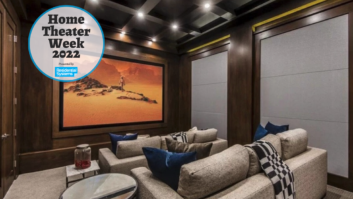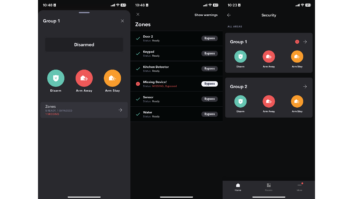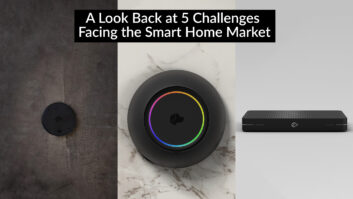“An idea is like a virus. Resilient. Highly contagious. And even the smallest seed of an idea can grow. It can grow to define or destroy you.” Inception
A quick Google search of ‘Home Networking Explained’ turning up a nine-part series describing the details of a home network put together by CNET, yet nothing using common language to explain what the home network is and why it is vital to our homes. A search on YouTube reveals a droll monotone voice explaining a router, but no pizazz and excitement explaining this new utility, upon which all home subsystems will be built.

Thinkstock/neyro2008
According to forecasters, there will be 50 billion (yes, billion) “things” connected and sharing data over the network by the year 2020. Today, my daughter “graduated” from kindergarten and was introduced as the class of 2026. This puts things in perspective. The year 2020 is not so far away—less than six years away to be exact.
We’ve talked about this all before, but if we do not start to take action, our industry could be crippled. Our entire ecosystems (audio and video) is already live on the network, and we had better move over and make room for additional things that are coming that are coming “online” next.
Here are four things you need to be doing today to be prepared for the network of tomorrow.
Start talking about the network to your clients. Maybe your client is not familiar with what a home network is and what it consists of, so start a dialogue. Begin planting seeds about the importance of the network and how it is the foundation of subsystems that they do not even know exists, but will come to rely on daily. If you do not put it out there, then they will not know.
Get over the cost. It is no easy task to ask your client to spend even a few hundred dollars for a wireless access point, but we need to go further. We need our clients ask for thousands to replace their router and properly lay out the system. Twice now a client has accused us of “robbing” them by asking them to invest in a proper network. Twice now we have had a tech onsite at the end of the job troubleshooting issues that turned out to be, you guessed it, network-related. Not setting proper expectations upfront will only hurt your own business and tie up technician hours down the line.
Sure, they do not want to spend money on something that is, essentially, invisible. How much did they spend on their last water heater or their furnace? These things live in basements and are never seen, but they are asked to provide a service. This is what networking is. This is why I say it is the next utility of the home.
When recently talking to a rep at ihiji, he told me to ask my clients, “Would you rather go a day without water or the internet?” Then wait and watch them contemplate before they answer. They’ll know the right answer is water, but they still struggle with the idea of not having access to the internet for a day.
Demand more for our manufacturing partners. We need to agree on “the language” we use to explain these pieces and parts we are asking people to invest. One of my favorite analogies is the router as a traffic cop monitoring congestion of information flowing to and from the house. Yes, it needs to be that simple for our clients to understand. Another analogy is the difference between a $150 home-theater-in-a-box system, to a full-blown home theater. There is a difference in cost and the experience. Today, the public is given the theater-in-a-box (Fios/cable router with wireless abilities), and told it is good for all things. We need to explain to our clients that they have been lied to without coming off like a used car salesman.
Through the power of our manufacturing partners—Pakedge, Access Networks, Luxul—we have the opportunity to set the standard and language that we use with our clients. Beyond white papers, we need to simplify the words we use to show and sell to the end-user. The trouble is, these companies have been so busy training us that they have not had time to shift their perspective to allow us to train a client.
Why are so many speaker companies coming out with great headphones? They know that once the seed of great audio has been planted deep in the brain (incepted, if you will), they’ll look to the same companies when it is time to put in their home systems. We need to feed this thinking for the home network.
Get trained. Yes, maybe you understand the difference between a managed and unmanaged switch (or maybe not). You understand port forwarding, but there is another level, a deeper level. Conveniently, CEDIA EXPO is right around the corner offering new classes in networking. Get training because it is imperative that you and your team to understand networking as well as you understand the details of AV.
Forget 4K for a moment and think IT. Think home networking. The IP revolution is happening now. Our industry is smart enough to see down the road and is willing to train you on how to get there. Take advantage of this opportunity or be left in the dust, saying goodbye to future business.
Heather L. Sidorowicz is the president of Southtown Audio Video in Hamburg, NY.








